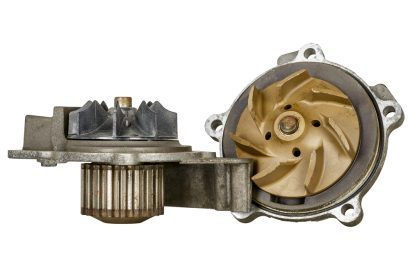4 Types Of Ceramic Thermal Spray Coatings Explained
Thermal spray coatings have revolutionized industries across the globe, and ceramic thermal spray coatings are at the forefront of this technological advancement. With an array of desirable properties like heat resistance, electrical insulation, and wear resistance, they have found a variety of uses in numerous industries. This blog post explores 4 types of ceramic thermal spray coatings, providing a detailed analysis of their properties, applications, and benefits.
An Introduction to Ceramic Thermal Spray Coatings
Ceramic thermal spray coatings are essentially thin layers of ceramic material applied to a surface using a heat source. These coatings are preferred for their robust performance under challenging conditions, including high temperatures, wear, and corrosive environments. The objective of using these coatings varies, ranging from improving the thermal efficiency of components to enhancing their resistance against wear and corrosion.
Plasma Spray Ceramic Coating
Plasma spray ceramic coating is among the most common types of ceramic thermal spray coatings. The process involves ionizing a gas (often argon or nitrogen) to create plasma, which heats the ceramic powder. This heated powder is then sprayed onto the surface. The result is a highly adhesive and dense coating that offers exceptional resistance to wear, corrosion, and high temperatures.
High Velocity Oxygen Fuel (HVOF) Ceramic Coating
HVOF ceramic coating, another type of thermal spray coating, uses a combustion process to heat ceramic particles. Oxygen and fuel are combusted at high pressure to create a hot gas stream that accelerates the ceramic particles before they hit the surface. HVOF ceramic coatings are renowned for their hardness, wear resistance, and low porosity.
Detonation Gun Ceramic Coating
The Detonation Gun method produces ceramic coatings of extreme hardness and durability. It uses a controlled oxygen-fuel detonation to heat and accelerate the ceramic powder. The high-velocity ceramic particles form a coating on the surface that is exceptionally dense and resistant to wear and corrosion.
Suspension Plasma Spray (SPS) Ceramic Coating
Suspension plasma spray (SPS) is a novel coating method that allows for the application of nanostructured ceramic coatings. In SPS, the ceramic powder is suspended in a liquid, which is then atomized into a spray and heated with plasma. The process creates coatings with unique properties, such as a highly porous structure and improved thermal insulation performance.
The Impact and Applications of Ceramic Thermal Spray Coatings
Ceramic thermal spray coatings have brought a paradigm shift in many industries. From aerospace and automotive to power generation and electronics, these coatings enhance the performance and lifespan of various components. They offer a solution to the challenges of high-temperature operations, aggressive wear, and corrosion, making them indispensable for modern industrial applications.
Unlock the Potential of the Incredible Technology of Thermal Spray Coatings
In conclusion, ceramic thermal spray coatings offer a versatile and effective solution to many industrial challenges. Whether it’s plasma spray, HVOF, detonation gun, or suspension plasma spray coating, each method offers unique properties that cater to various applications. By understanding these different types, industries can make more informed decisions to optimize the performance and longevity of their components, paving the way for more efficient and reliable operations.
Understanding and utilizing ceramic thermal spray coatings is a testament to how engineering innovations can transform and redefine industry standards, pushing the limits of what’s possible.



